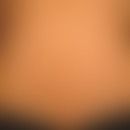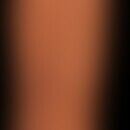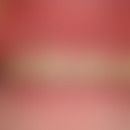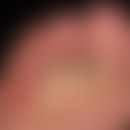Synonym(s)
DefinitionThis section has been translated automatically.
Tretinone is the oxidized form of vitamin A, a dermatotherapeutic agent that is practically insoluble in water and soluble in ether, and is widely used as an acne therapeutic agent. See also Vitamin A.
IndicationThis section has been translated automatically.
Lipophilic preparations are preferred for chronic skin diseases and for the treatment of aging skin. DAC/NRF describes 2 lipophilic tretinoin-containing magistral formulations:
- Lipophilic tretinoin ointment 0.025 to 0.1%.
- Lipophilic tretinoin cream 0.025 to 0.1%
- Indications are psoriasis vulgaris, ichthyosis or actinic keratoses.
For the indications of acne comedonica and acne papulo-pustulosa, the DAC/NRF lists 3 different hydrophilic formulations:
- Hydrophilic tretinoin cream (0.025-0.1%).
- Hydrophilic tretinoin gel (0.025-0.1%)
- Ethanol-containing tretinoin solution (0.025-0.1%)
For an application in the oral cavity, pharmacies can prepare an adhesive paste that can be used, for example, in the treatment of lichen planus mucosae. The basis of tretinoin adhesive paste 0.05 to 0.1% (NRF 7.9.) is an anhydrous kerosene gel in which the nonionic hydrophilic swelling agent hypromellose has been suspended in high concentration (Melhorn A 2017). The adhesive paste is well suited for the selective treatment of lesions in the oral cavity. Hydrogels based on carbomers or hydoxymethylcellulose are suitable for the treatment of larger areas (Melhon A 2017).
You might also be interested in
Limited indicationThis section has been translated automatically.
Dosage and method of useThis section has been translated automatically.
- 0.025-0.05% as a cream apply thinly 1-2 times/day after thorough skin cleansing.
- 0.1% as solution Apply thinly 1-2 times/day after thorough skin cleansing.
Undesirable effectsThis section has been translated automatically.
InteractionsThis section has been translated automatically.
Benzoyl peroxide, erythromycin, isotretinoin, polydimethyl silicone resin, resorcinol, salicylic acid, sulphur and UV rays intensify the skin irritation. Benzoyl peroxide and light inactivate tretinoin.
ContraindicationThis section has been translated automatically.
Pregnancy, lactation, acute skin rashes, use around the eyes and mucous membranes, rosacea.
Recipe(s)This section has been translated automatically.
Tretinoin in preparations is sensitive to light and oxidation (Brisaert MG et al. 1995). To ensure sufficient stability of the prescription drug, an antioxidant must be added. Butylhydroxytoluene has proven to be advantageous with regard to chemical stabilization. Butyl hydroxyanisole is also used in finished medicinal products (Meehlhorn A 2017).
PreparationsThis section has been translated automatically.
Note(s)This section has been translated automatically.
According to a meta-analysis (n=654), accidental contact of a pregnant woman in the 1st trimester does not result in an increased incidence of spontaneous abortions (O03.), premature births, malformations (Kaplan YC 2015).
LiteratureThis section has been translated automatically.
- Brisaert MG et al (1995) Chemical stability of ttretinoin in dermatological preparations. Pharm Acta Helv 70: 161-166
- Kaplan YC (2015) Pregnancy outcomes following first-trimester exposure to topical retinoids: a systematic review and meta-analysis. Br J Dermatol 173:1132-1141.
- Mealy Horns A (2017) Tretinoin. Dermatologist 68: 941-944






